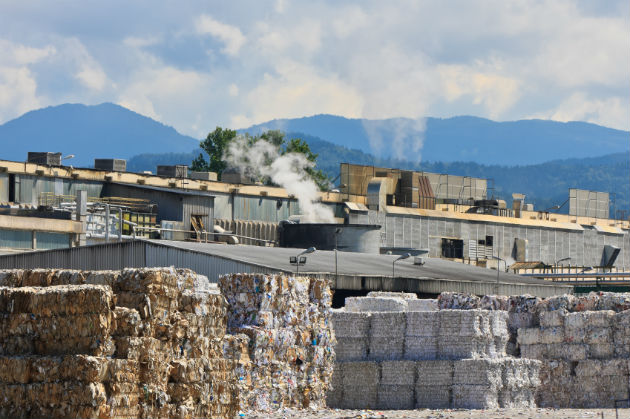Paper is a common material used in a variety of consumer products, from toilet paper and greeting cards, to basic product packaging. According to the
American Forest & Paper Association, Americans consumed 2.63 million tons of recovered paper in 2010, which is almost 10% higher than the amount used in 2009. Because of the high demand for paper, it’s imperative that the paper recycling process continues and thrives.
So, how does this process begin?
Paper recycling begins with the consumer. Used paper is either dropped off at a local recycling center or picked up curbside by a recycling service or paper stock dealer. After the collected paper is sorted, it’s then baled and moved on to a paper mill, where it begins its transformational journey.
Pulping and screening
At the
paper mill, the baled paper is taken via forklift to a conveyor belt, which transports the paper to a pulper. This is where the pulping stage begins. The paper is mixed with water and chemicals before being heated and passed through a chopper to break down even further.
Eventually, the recovered paper turns into fibers or small, organic plant materials. After the paper has completed this stage, it’s considered pulp, and it moves out of the pulper and enters the
screening stage. Here, the mushy paper (pulp) goes through screens with holes and slots to remove plastic, glue, coatings, fillers, loose ink particles and additives.
Initial cleaning
The screened pulp is then transferred to large cone-shaped cylinders, where it is literally spun clean. As a consumer, it’s beneficial to sort your paper and remove paper clips, staples, etc., but if you don’t catch these things and the recycling center doesn’t either, the paper cleaning process will take care of it.
These cylinders spin around fast so that heavy contaminants such as paperclips move to the outside of the cylinder and lighter materials move to the center.
More cleaning and de-inking
Now that the paper has been spun clean, it has to take a bath, so to speak, for
further cleaning. First, the pulp is dissolved in water so that the non-fiber impurities such as residual glue and adhesives can be separated — this is also known as the washing stage. Then larger materials such as ink can be removed through the flotation stage. In order to force the ink to the surface, air is blown into the solution, which causes the ink to stick to the air bubbles.
Refining
At this point, the reclaimed paper is nearing the end of its transformation, but first it has to look shiny and new. So, the pulp fibers are beaten down, and any colored paper is stripped with chemicals. Lastly, the reclaimed paper is bleached using hydrogen peroxide, chlorine dioxide or oxygen, unless the brown paper will be turned into brown paper products.
The final stages
Finally, the clean pulp enters the
headbox, where it’s mixed with virgin fiber, water and chemicals and then sprayed out onto a flat wire screen. The screen allows the water to drain and the fibers to bond, and large rollers flatten the pulp into a large sheet of paper. Next, heated metal rollers dry the sheets, and any coating is applied to give the paper a glossy or matte finish. The paper has reached the end of its journey and can be cut into specific products such as printer paper, envelopes, etc.
Although paper recycling involves several stages and meticulous procedures, it takes only hours to process it once it gets to the paper mill. Believe it or not, the U.S. recycles an unfathomable amount of paper every day — enough to fill a 15-mile-long train of boxcars!
